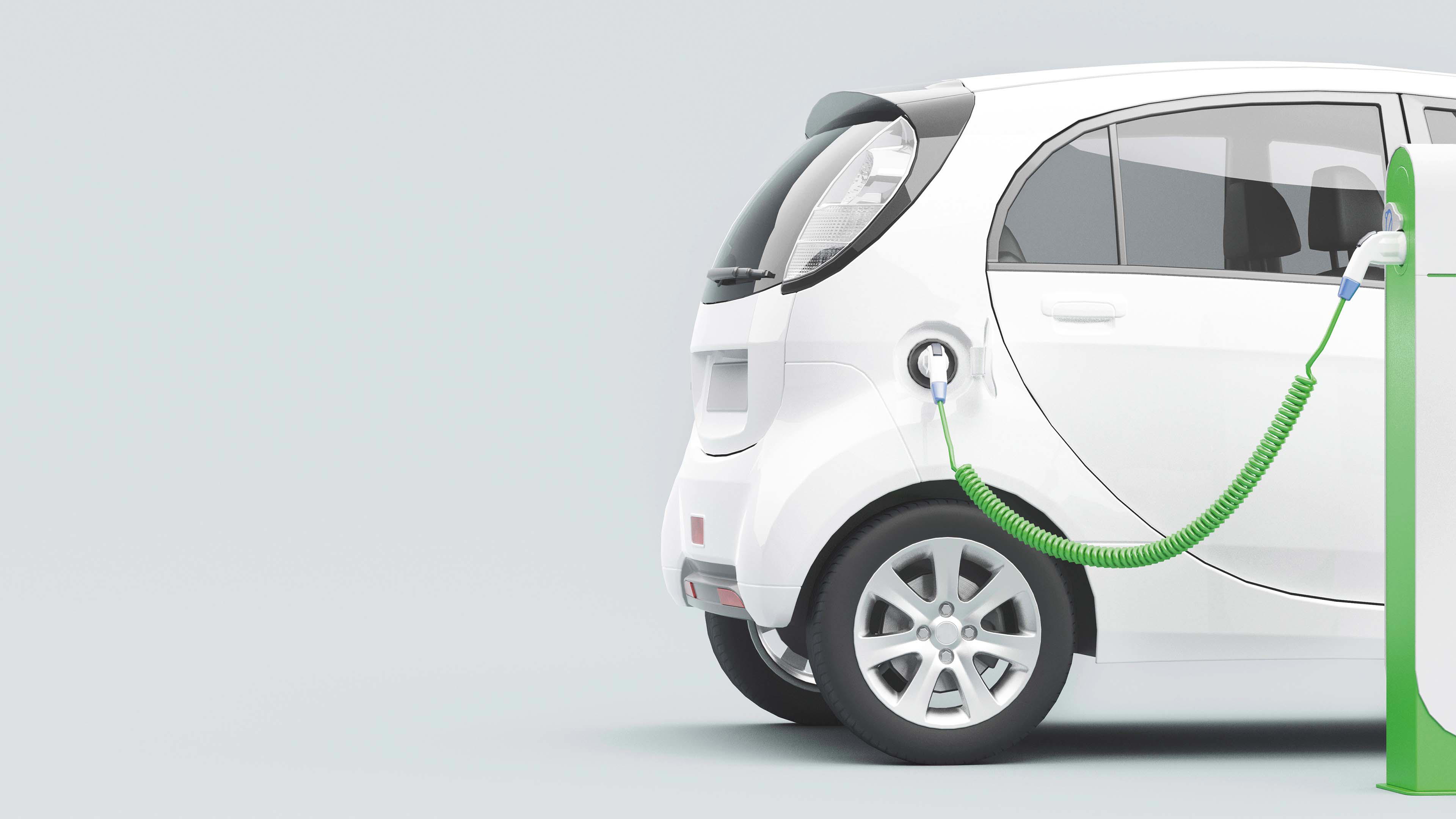

- Eleanor Hill
- Editorial Consultant, Treasury Management International (TMI)
Supply chain disruptions. Electric vehicle demand. Computer chip shortages. Infrastructure deficits. The auto sector is facing a host of challenges right now, but it is also the poster child for digital transformation, especially in treasury. Here, two experts from Citi share lessons from leading auto treasuries, which can be applied in any sector looking to become more digital and sustainable.
The 1960s saw traditional societal behaviours thrown to the wind – and kickstarted a revolution in the automotive industry when European car manufacturers began experimenting with mechanical fuel injection systems. This was the first step on a journey towards cars with computerised components.
Today, cutting edge cars run on more lines of computer code than a Boeing 787 Dreamliner[1]. And growth in the electric vehicle (EV) market is only revving up this trend towards digital-first cars, notes Vincent Couche, TTS Sales Head for Industrials, Treasury and Trade Solutions, Asia Pacific, Citi. “Despite the disastrous effect of Covid-19 on lives and livelihoods, not to mention the auto industry as a whole, the momentum behind digitisation and the shift away from internal combustion engines [ICEs] towards EVs has not lost any steam.”

Vincent Couche
TTS Sales Head for Industrials, Treasury and Trade Solutions, Asia Pacific, Citi
Quite the contrary, notes Couche, the strategic importance of shifting towards more digital, automated and sustainable practices in all aspects of business, including treasury, was only strengthened by the global health crisis. Moreover, manufacturers, like Tesla, continue to push the boundaries of what is possible around batteries for EVs, with current research looking to make them available at lower prices, with greater energy density, longer lifetimes, higher safety, and more sustainable materials[2].
New business models
While the shift towards computerised and electronic vehicles looks set to be beneficial for the environment, treasurers in the auto sector are contending with numerous challenges arising from this transition, and exacerbated by the pandemic, says Couche. The first of these is increased M&A.
As car manufacturers seek to rapidly build a strong proposition around EVs, they are realising that they cannot take on all of the transition work themselves. They either need to partner with an expert, or buy another organisation that has the specialist knowledge. “We’ve therefore seen a flurry of M&A deals recently, meaning that treasury has been tasked with raising the appropriate finance, as well as performing the integration between disparate treasury functions and systems.” M&A activity has also been boosted by the pandemic, which saw some companies looking for financial injections.
The second trend is an inevitable shift in the supplier base of original equipment manufacturers (OEMs) as they must now purchase more parts from specialist suppliers. “As EVs evolve, and autonomous driving continues to develop, cars will need more and more lines of code as well as additional sensors and software. In fact, almost 50% of the cost of a new car actually comes from the software,” comments Couche. And just as many traditional suppliers are being pushed out by new entrants, so too are numerous outdated commercial practices.
Often, the disruptors work according to different timelines and payment terms. This can translate into working capital shocks if treasury is not well prepared for the transition. “Treasurers must therefore look closely at supply chain practices as the shift to EVs continues apace,” he says.
Since many of the new entrants are young tech companies, they may also be relatively fragile from a financial perspective, according to James Mahn, TTS Sales Head for Industrials, North America, Treasury and Trade Solutions, Citi. This means that supply chain finance (SCF) solutions are potentially more relevant than ever. “And given the evolving sustainability environment, building ESG criteria into those SCF programmes is a natural next step,” comments Mahn.

James Mahn
TTS Sales Head for Industrials, North America, Treasury and Trade Solutions, Citi
SCF programmes can also be useful in ringfencing strategic suppliers to ensure first choice on the suppliers’ goods or services. This could potentially prove to be a make-or-break strategy in an era when car manufacturers are increasingly competing with tech companies for components, not least computer chips.
Changing mechanics
Supply chains are also changing in terms of geography, which is the third trend identified by Couche. The pandemic, he notes, caused severe supply chain disruptions and dislocations which highlighted the fragility of a model whereby cars are manufactured on one side of the world and then shipped to the other side. “Nearshoring is becoming popular again, but with production being moved closer to end markets, the working capital mix of the company – and the currencies it deals in – are once again changing. Treasurers are tasked with keeping pace with this metamorphosis.”
The fourth trend, says Couche, is a shift away from traditional car finance companies towards newer, more responsible business models. “Captive finance companies have been lucrative for OEMs for a long time – but the ownership approach to cars is changing. Consumer expectations are shifting as they look to address growing environmental concerns and buying a car no longer seems appropriate to many. Instead, consumers are looking for ways to share cars, on a journey-by-journey basis, which has given rise to a proliferation of ride share companies.”
With this shift comes a transition from an asset-based financing model to a service-based economy. So rather than receiving regular lump sums, treasurers will be in receipt of a greater volume of lower value cash flows. To master this onslaught of flows, digital treasury tools will be essential (more on these later).
Of course, not all consumers are at the point of wanting to give up car ownership, Mahn notes. And among those consumers that do still want to buy a car rather than lease one or use one as a service, behaviour is also changing. Where, pre-pandemic, consumers would typically visit dealerships to make their purchases, more are now likely to buy cars online. “This direct-to-consumer [D2C] model is a change of pace for the auto industry and creates a new dynamic between OEMs and dealers,” comments Couche.
Treasurers will undoubtedly be involved in D2C conversations around payment methods suited to the consumer market. Discussions, says Couche, may even take place around the acceptance of cryptocurrencies for the purchase of vehicles, as a means to enhance the D2C experience. Of course, this will have significant cash management implications, ranging from risk management to banking partnerships.
Connectivity rules
If there weren’t already enough adjustments happening in the auto sector, connectivity advances are also changing the game: think connected cars, 5G, the internet of things (IoT) and smart cities, says Mahn. And yet again, treasurers are on the receiving end of these trends.
“With the rollout of 5G infrastructure and the increased tendency for consumers to no longer use cash, connected cars and their ability to enable seamless in-car payments are coming into their own,” notes Mahn. The contactless nature of these transactions for everything from petrol to parking and charging of EVs, has also seen rising interest in in-car payments throughout the pandemic. Treasurers in the auto sector are therefore learning to tackle a rising tide of micropayments, resulting from connected cars, he says.
Intelligent mobility
Payments are far from the only opportunity for connected cars, though. Numerous monetisation windows exist, Couche believes, especially in relation to smart cities. “Our proprietary research shows that 64% of travel happens in urban areas and the total amount of urban kilometres travelled looks set to triple by 2050. Meanwhile, 30% of traffic congestion in urban areas is caused by drivers looking for parking spaces,” he explains.
As such, there is an immediate opportunity for 5G-enabled parking management, whereby connected cars equipped with sensors can share data about congestion and parking spaces in their location. Mahn adds: “Potentially, the cars can even share information about the state of the road, if it needs to be resurfaced, for example. Or about the quality of air around them.” In other words, data collected by connected cars will soon become a new source of revenue for OEMs as they sell it to third-parties, including governments.
The latter may also be interested in working with OEMs on autonomous ambulances, believes Couche, which could enable the more socially deprived to access healthcare in an equitable manner. While this sounds like an excellent idea in principle, the challenge for treasurers, Couche says, is the shift from selling to consumers to fleet managers, which will naturally have an impact on the risk assessment of their asset-backed portfolio. “Conversations will need to be had with banking partners as this B2C to B2B shift takes place,” he suggests.
Factory of the future
If autonomous ambulances sound like science-fiction, then by way of context, it is important to understand just how advanced factories are becoming. Mahn elaborates: “Smart factories, those embracing Industry 4.0, bring together the best of robotics and people to provide an opportunity to work in a more customised manner. Manufacturers no longer have to produce en masse to make a profit.”
The result of a smarter factory is a reduced capital need for any new entrants – which is opening the door to greater competition. This is especially true in the EV space, where engines are much simpler and contain only around 30 moving components compared with the traditional 3,000. Thanks to these lower barriers to entry, a growing number of competitors are popping up to challenge traditional OEMs, according to Couche. “In China alone, we are seeing around 100 car manufacturers currently. This change is happening in real-time, as a result of technology, but is highly dependent on local markets being ready for EVs.”
On the treasury side, smart factories typically mean shorter times to market and rapid reaction times, so as soon as a market becomes ready for EVs, capex will need to be allocated to a smart factory in that location, notes Couche. “This can happen extremely quickly, so agility in the treasury department is critical.”
Getting treasury up to speed
Against this backdrop, auto treasuries are understandably chomping at the digitisation bit. Visibility and control over cash are key, leading to data dashboards being particularly popular in the sector, according to Mahn. “Treasurers in this industry, perhaps more than any other, are facing a confluence of external risks and pressures. Control of liquidity and the ability to accurately forecast are paramount. Use of data dashboards and APIs to aggregate information is quickly becoming the norm. Intelligent cash flow forecasting solutions which leverage artificial intelligence are also being deployed as treasurers look to stay ahead of the evolving needs of the wider business through cutting-edge technology,” he notes.
The ability to move liquidity in all directions – with the sun and against the sun – and to share liquidity in real-time and to create automated cross-currency sweeps is also critical in this fast-paced environment, adds Couche. “All of these real-time solutions, which Citi has introduced, assist treasurers in better managing the immediate requirements that the digital operating environment entails.”
Yet there are slower paced changes to consider too, believes Couche. “As much as technology moves on, the classic need for treasury centralisation and efficiency remains. We have therefore been working closely with many auto clients to restructure their treasury functions, often moving towards shared service centres, and improving operational efficiency through automation and straight-through processing, for example.”
The cost reductions, together with the efficiency and control benefits, of such fundamental restructuring can be significant enough to deliver competitive advantage in this increasingly hard-fought sector. But the core message here is that treasurers cannot rely on technology alone to position themselves ahead of the current wave of change.
Couche believes that treasury leaders also need to upskill their talent, and be able to insert treasury into strategic discussions at an early stage – wherever in the world they are happening. “Treasury leaders may wish to consider appointing a member of the team to be the departmental spokesperson in meetings around commercialisation models, ranging from in car payments to D2C. This will ensure that treasury’s voice is heard.”
As Mahn points out, there is also an ever-increasing need to comply with tax and transparency regulations, as well as data protection laws. “These aspects of compliance should also be on the strategic map for auto treasurers in the years ahead. As local markets become ready for EVs, so too will treasury need to be ready for doing business in those geographies.”
Global banking partners can assist here, insists Couche. “As a busy treasurer, it can be tough to keep up with all the latest market developments. A global banking partner with sector expertise can deliver information around regulatory change, as well as evolving EV hotspots. They also have the solution set and technology offerings – that are consistent across geographies – to enable treasurers to stay ahead in a rapidly changing world.”
Making a difference
While treasury leaders in the auto sector undoubtedly have their work cut out for them, they are arguably operating in one of the most exciting and impactful industries right now. As Mahn summarises: “With the right technology in place, auto treasurers have an opportunity to deliver a positive impact on profits, people and the planet. They can also help to shape the future of consumer payments and even urban living. It’s a large remit, but it’s also an incredibly exciting one.”



